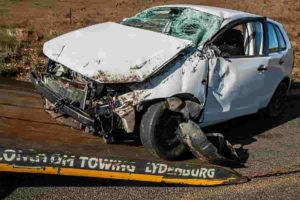It only takes a moment for a car accident to happen, but every collision marks the beginning of a long journey of decisions and negotiations. You may have heard states described as “fault” or “no-fault” insurance states. In fault insurance states like California, drivers are required to carry proof of financial responsibility (usually in the form of liability insurance) and to cover the damages they cause in accidents. No-fault insurance, such as Personal Injury Protection (PIP) coverage, is not always required in these states.
In no-fault states, drivers are required to carry no-fault insurance such PIP coverage. This insurance will pay for damages no matter who was found to be at fault for a collision.
So what does California’s status as a fault insurance state mean for you after a collision? Read on to find out:
1. The Party Liable for Your Accident Is Responsible for Paying the Damages
If you are found to have been at fault for a collision, you (or your insurance company) will be required to compensate victims for their damages. In cases when multiple drivers share liability, each driver will be responsible for covering the percentage of damages that corresponds with their percentage of fault.

More than one driver can be deemed at fault for a collision in California. Each driver is responsible for covering the amount of damages that corresponds to his or her percentage of fault.
2. California Requires Drivers to Prove Financial Responsibility
All drivers are required to purchase liability insurance that meets the state’s minimum limits or otherwise have proof of financial responsibility. The minimum liability coverage in California is 15/30/5, or $15,000 for injury to one person, $30,000 for total bodily injuries in one accident, and $5,000 for property damage liability. If the at fault driver is uninsured or does not have enough coverage to pay for the damages incurred, that driver will have to pay the difference out of pocket.
One alternative to purchasing car insurance in California is making a $35,000 deposit to the DMV, or obtaining a self-insurance certificate from the DMV, or a $35,000 surety bond. You must carry proof of financial responsibility at all times when driving.
3. Evidence to Prove Negligence and Liability Is Essential
Insurance companies primarily use police reports to determine how to assign fault; however, police reports are not always accurate or entirely clear. If you disagree with the statements on the police report or with the insurance company’s decision, there is other evidence you can use to prove negligence and liability such as photos of the crash scene, eyewitness testimonies, testimonies from accident reconstruction experts, and surveillance footage of the crash. Click here to learn the most important steps to take at the accident scene to strengthen your claim.
4. It May Be Worth Consulting an Attorney
Whether you were injured in a collision or were found to have been at fault for an accident, you should consider consulting a personal injury attorney. An experienced lawyer can help you gather evidence and fight for the most favorable outcome for your case. Your attorney can also help you identify all potential avenues for recovering compensation.
It’s not easy to focus on legal and financial concerns after an accident, but having a good understanding of California’s insurance laws could put you in a more favorable position to file a successful claim. If you have any points to add, feel free to share them in the comments section below.
